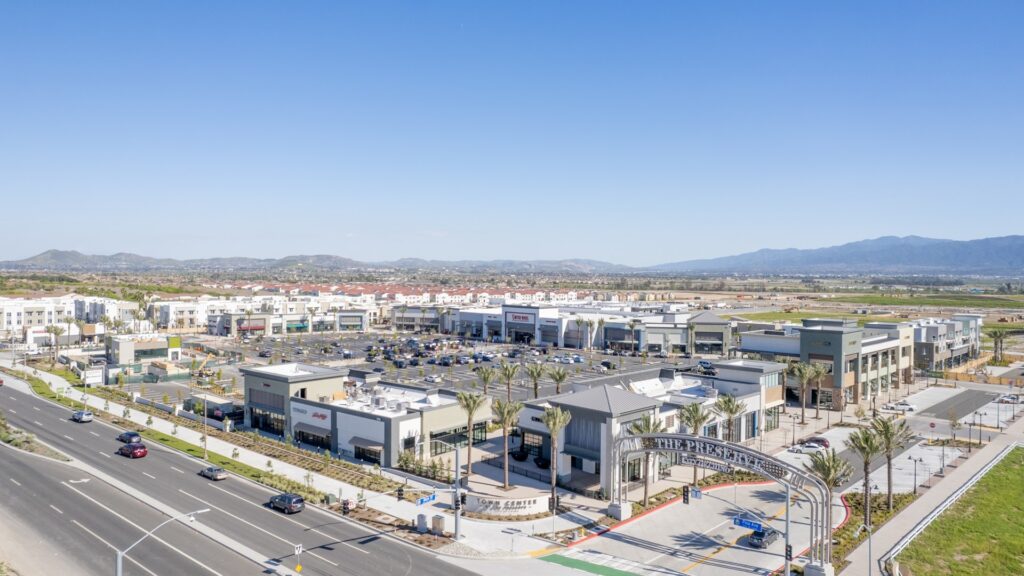Inland Empire Retail Market Sees Steady Growth Amid Evolving Demographic and Economic Shifts
Population in-migration, affordable housing, and new retail developments drive demand as the region navigates higher vacancy rates, slower rent growth, and rising construction costs in 2024.


MARKET OVERVIEW
The Inland Empire’s retail market has seen notable growth over the past year, driven by population in-migration and the region’s more affordable housing options. According to the California Department of Finance, the population of Riverside and San Bernardino Counties grew by 0.5% from 2023 to 2024, surpassing 4.6 million residents. This demographic shift has contributed to an uptick in retail construction, with 380,464 square feet added to the market in the first half of 2024—more than double the amount added during the same period in 2023.
The vacancy rate in Q2 2024 increased by 20 basis points from the previous quarter and by 30 basis points year-over-year, reaching 5.7%. This reflects ongoing adjustments in demand and supply, highlighted by the 239,900-square-foot Sears department store vacancy at the Inland Center Super Regional Mall, now poised as a redevelopment opportunity in San Bernardino. Meanwhile, average rent shows signs of stabilizing. Although it declined by 2.7% quarter-over-quarter, rent remains 20.1% higher than in Q2 2020 at the onset of the pandemic and is up 4.7% year-over-year, reaching $1.79 per square foot per month.
Inland Empire Retail Market Q2 2024 Statistics:

These trends underscore caution in retail development amid rising construction costs, inflation’s impact on consumer spending, higher interest rates, and slower rent growth. In the first half of the year, sales volume rose by 10.4% compared to the previous year, totaling 2.2 million square feet year-to-date. However, there was a significant 53.6% quarter-over-quarter decline in square footage sold, following a strong Q1. The average sale price per square foot dropped by 3.2% year-over-year to $358 per square foot. Sales dollar volume across the region for the first half of 2024 declined by 20.0% from the same period in 2023. Additionally, the average capitalization rate increased by 40 basis points compared to last year, now standing at 6.1%. Investors are responding to price disparities by considering retail class quality, softening market conditions, elevated interest rates, and tight credit, leading to fluctuations in transaction volume.
TRENDS TO WATCH
The fundamentals of Inland Empire retail continue to evolve as we move into the second half of 2024. Migration, economic factors, and employment trends will remain key drivers of growth in the region, albeit at a moderated pace. According to the latest figures from the California Employment Development Department, the unemployment rate in the Riverside-San Bernardino-Ontario MSA rose to 5.8% in July 2024, up from a revised 5.3% in June, and higher than the 4.9% rate recorded a year ago.
People drawn to the region for its relatively affordable housing, particularly from neighboring counties, are expected to continue fueling retail demand in their local communities. According to the California Department of Finance, cities across the Inland Empire experiencing the largest population growth include Coachella (+2.4%), Menifee and Beaumont in Riverside County (both up 2.0%), and Victorville (+1.4%), Ontario (+0.9%), and Fontana (+0.7%) in San Bernardino County. As of Q2, nearly 562,128 square feet of retail space were under construction, reflecting a 12.7% increase quarter-over-quarter, recovering from a 14.7% decline compared to Q2 2023. Riverside County accounts for 45.6% of the total retail space under construction, while San Bernardino County accounts for 54.4%, an almost even split. By midyear, construction added close to 420,000 square feet of retail space in the Inland Empire, with the majority (79.9%) added in San Bernardino County.
Developers have taken notice of these shifting trends. Lewis Retail Centers’ Town Center at the Preserve in San Bernardino County is a 146,800-square-foot modern community center anchored by Stater Bros. Located in the heart of a master-planned residential community, it aims to meet the growing demand for quality retail options in this under-served area. In Riverside County, the regional Vineyard Freeway Center, anchored by Costco and Aldi, represents approximately 200,000 square feet of new construction. With grocery anchor tenants—considered among the most resilient in the post-pandemic era—the Inland Empire may avoid significant disruption from the looming Kroger and Albertsons merger. The FTC’s pending approval of the Kroger-Albertsons merger requires Albertsons to divest stores in competitive areas, with only five identified in the Inland Empire: four in the Coachella Valley and one in the City of Wildomar in Riverside County. Additionally, Coachella’s population growth suggests that any resulting vacancies from the merger would likely be quickly absorbed by competitors.


































































